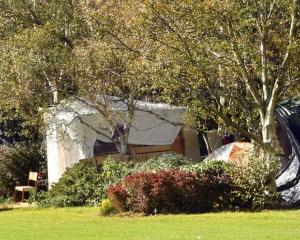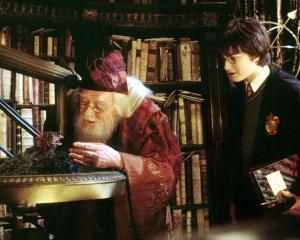
Like many who grew up in small towns or rural New Zealand, lamb was a staple of my family’s evening meals, from chops mid-week to the Sunday roast.
These days, lamb is more of a treat, as it is a bit more pricey, but New Zealanders still love eating it. At Christmas, people poured into supermarkets to buy cut-priced lamb legs, some stores having to restrict sales to one per person and others selling out.
Beef + Lamb New Zealand estimates New Zealanders consumed about 4.3kg of lamb per person in the 2021-22 year and that consumption has stayed above 4kg since 2018.
Links Quality Meats butcher James Biggs agrees lamb is still popular.
"Lamb is still a huge seller. Even with the price of it at the moment, it has not slowed down. Kiwis still love their lamb."
He has noticed there is often a surge in demand on Saturdays as people look to treat themselves over the weekend - something he occasionally does himself. His favourite cut at the moment is lamb ribs slow roasted on a charcoal rotisserie accompanied by a strong Middle Eastern, harissa-type marinade.

"It’s my go-to. You render the fat down slowly and it is super flavoursome. You cook it nice and slow, and hit it with some fresh lemon zest to finish off."
The ribs are just one of the many different cuts of lamb that are becoming more common these days as producers and butchers look to use as much of the animal as possible for as much of the year as possible to prevent waste.
"With lamb at the price point it is, you need to utilise as much of it as you can."
Each week, Biggs and his butchers break down whole lamb carcasses into sections, keeping the legs, forequarters and loins whole so they do not deteriorate when they go in the chiller. From there, they break it down into different cuts, such as shoulder - which produces the shanks, chops and oyster cut - then lamb rack, loin, back strap and neck as needed.
"We try and showcase all the different cuts you can get off the lamb. You can break a shoulder down into a lot of different cuts and it’s pretty economical as well."
The shoulder is one of the harder working parts of the animal, so it is tougher, with more fat, and requires slow cooking compared to the back of the animal, where the quick-cook tender cuts such as back straps come from.
"Loin chops fly out the door. It’s easy to sell lamb cutlets and lamb racks, but when you change seasons, if you have the shoulder and neck which are traditionally slow cooking and braising - how do you utilise that in summer? But you can bone out the shoulder and neck and marinate them and they take to barbecuing really well. They’re pretty versatile."
Biggs sees educating buyers about how to use what might be seen as traditional slow-cooked or braised cuts for winter during summer as part of his role as a butcher. This means using marinades to tenderise those cuts for up to 24 hours before cooking slowly on the barbecue.
"Acidity, like lemon, is great at breaking down muscles and tenderising a cut for the grill or barbecue."
Dunedin chef and restaurateur Michael Coughlin, who has been cooking lamb for more than three decades and a Beef + Lamb ambassador chef for nearly as long, says talking about different lamb cuts or breeds is something new for many people.
"We celebrate different cuts and breeds of beef ... but we don’t traditionally, apart from merino, differentiate between breeds of lamb or regionality and potentially what kind of flavour profiles they might gain from different things like what they graze on."
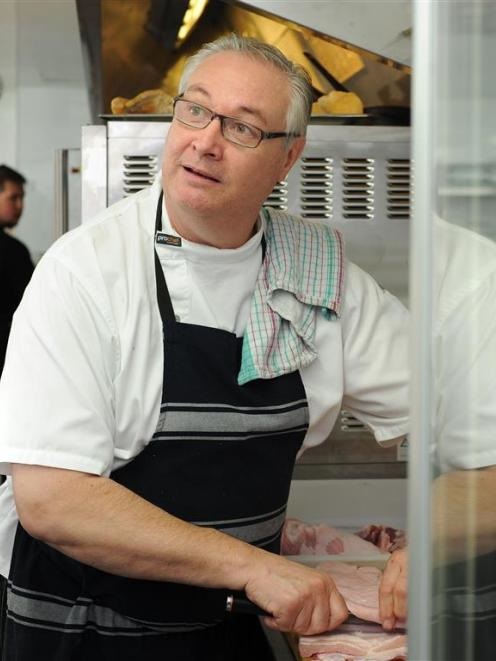
"It symbolises what New Zealand farming is all about. New Zealand as a whole is constantly innovating and streamlining what they do."
Coughlin’s favourite cut is the oyster shoulder, named because it’s shaped similar to an oyster. It has fine texture, which tolerates slow cooking on the bone, but can also be barbecued, as it has enough surface fat.
"It’s very easy to do, quick to prepare. Slash the fat on the top, rub it with some seasoning and cook it on the barbecue or put the whole thing in an oven bag into the oven."
For a recent dinner party, Coughlin marinated an oyster shoulder in Massaman curry flavours and Greek yoghurt and cooked it slowly in a roasting pan in the barbecue with the lid down on 120°C for four hours.
"I wanted to be able to pulled it off the bone. I served it with naan bread and a roast cauliflower salad with a spicy yoghurt like a raita. It was intended to roll it up in the naan and chow down on it."
He is encouraging chefs to move away from the super-popular lamb racks and loins and try something different so there is less waste in a lamb carcass. You can only get two French racks of a lamb, leaving a lot of the animal still to be used.
"It’s bloody hard to sell the rest of the lamb."
Like Biggs, he believes that, with a bit of imagination, traditional slow-cooked winter cuts can be used in summer. For example, a lamb shank can be cooked and presented in different ways.
"It’s protein, you just need a different cooking approach. You can use a different garnish - you don’t have to serve them with mashed potato, braised cabbage and bacon."
Tougher cuts of lamb are comprised of more connective tissue (silver skin), which softens and dissolves into gelatine over a longer period of time, so immersing these cuts in additional liquid - such as a stock or thickened gravy - prevents the meat drying out during the cooking process. Or they can be cooked in a lidded roaster (Dutch oven) or an oven bag to give much better results.
In a recent cooking demonstration, Coughlin cooked lamb shanks in a white broth, took the meat off the bone and served it with baby tomatoes, capers and tomatoes.
"After 36 years as a chef I approach meat differently. I purposely avoid cooking in the traditional way. You need to move away from that, food has changed. We need to move with the times and create lighter dishes, more healthy dishes, yet everyone steers towards those prime cuts."
He often talks to chefs about using cuts other than French rack.
Coughlin ran his thinking past Auckland chef and restaurateur Ben Bayly, who owns Aosta in Arrowtown, on a recent television shoot for Bayly’s cooking show The Restaurant That Makes Mistakes and got him to try lamb topside, a cut taken from part of the leg of the lamb otherwise not used.
"Ben was blown away. If I can get someone like Ben enthusiastic about a cut like this I’ll get other chefs [interested]."

Michael Coughlin’s tips for cooking lamb
CUT
- Decide on what cooking method you are wanting to use, then select a cut best fitting for that method.
- Smaller, tender cuts such as the rack, cutlets, lamb rumps, tenderloins and shortloin are normally cooked over a higher heat and for a shorter period of time.
- Larger and tougher cuts, such as shoulder cuts, shanks and leg cuts, yield a better result when cooked over a longer period of time and at a lower temperature.
SEASONING
- Lamb pairs beautifully with a variety of seasonings like rosemary, oregano, marjoram, thyme, lemon zest, cumin, coriander, mint and garlic.
- Make small incisions on the surface of the meat and push slivers of garlic and sprigs of herbs into the slits.
- Marinades and rubs are a great way of imparting additional flavour into your meat.
- Marinades that contain acid based ingredients such as lemon juice, yoghurt or wine, can help tenderise the meat, but be careful not to over marinade, as this can actually harden the texture as well.
- Dry rubs using a mixture of dry spices and aromatics are commonly used when slow cooking over live flame or barbecue and create interesting and harmonious flavours in combination with the smoke and char from cooking over wood or live flame.
COOKING METHOD
- Bring lamb to room temperature: allow the lamb to sit at room temperature for 15-20 minutes before cooking. This helps it to cook evenly.
- Roast leaner cuts of lamb in a hotter oven (230°C) to get a lovely brown crust and a well-cooked center; cook fattier cuts of lamb low and slow (160°C) to render all the fat and allow the lamb to cook in its juices.
- The internal temperature of the lamb, when probed with a cooking thermometer, determines its level of "doneness". Here are some guidelines of temperatures you need to know to cook lamb to your liking:
- Rare: An internal temperature of 50°C-60°C.
- Medium rare: An internal temperature of 60°C-65°C.
- Medium: An internal temperature of 65°C-70°C.
- Medium well done: An internal temperature of 70°C.
- Well done: An internal temperature of 75°C-77°C.
RESTING AND CARVING
Resting: After cooking, let the lamb rest for at least 20 minutes before serving. This allows the juices to redistribute throughout the meat, resulting in a moist and more tender dish.
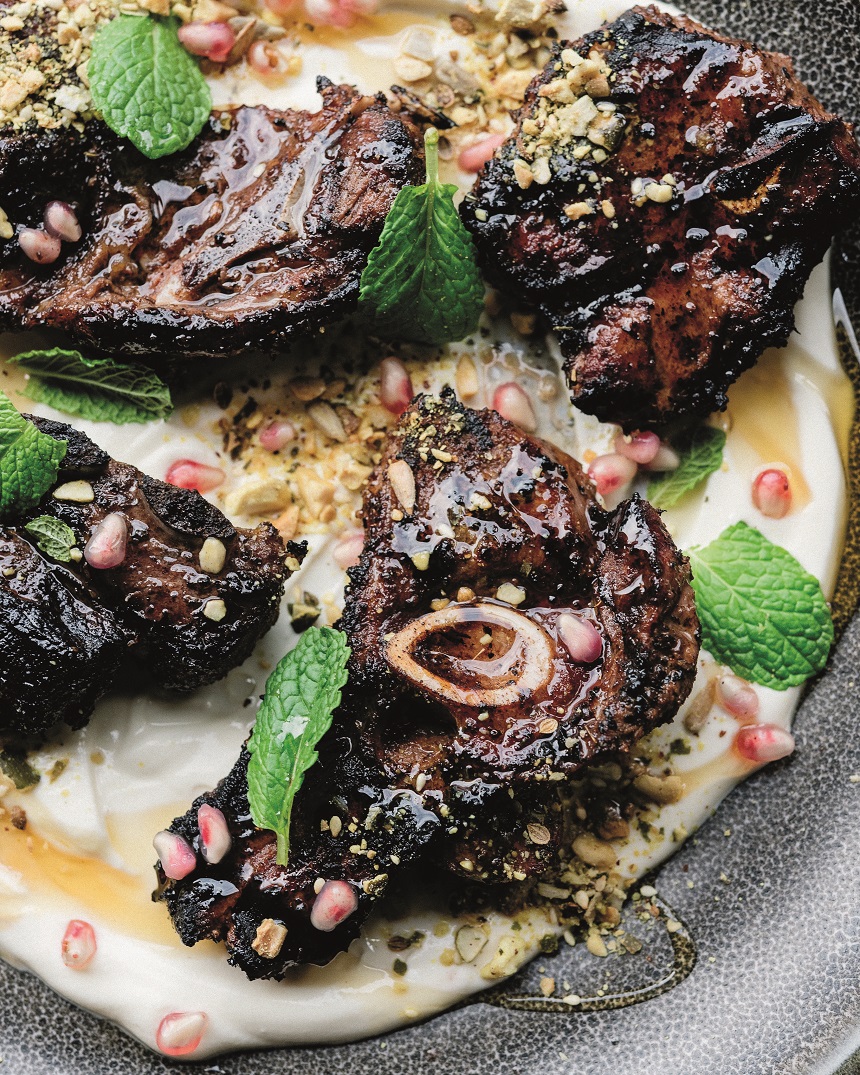
Spiced lamb shoulder chops with labneh, honey and dukkah
New Zealand chef Al Brown has a soft spot for lamb chops and in his latest book included this recipe.
Growing up on a farm where "home kill" was the norm, we ate more lamb, hogget and mutton than any other protein. I never tire of sheep meat - in fact, if I have been overseas for a bit, when I arrive home it’s usually a simple lamb chop that I look forward to eating the most. Racks of lamb and loin chops are normally the most tender. However, I have a real fondness for lamb shoulder chops. With their irregular bone and cartilage formations, shoulder chops offer up a far more interesting eat than the others. Some of the pockets of meat are super tender, others have a little more chew, and that is what I like about them. Chops are finger food; it’s a messy job at times, but that’s the appeal. The following recipe works wonderfully well with spice, char, sour, sweet and nutty all hangin’ out together. I like to let these chops marinate in the fridge for a couple of days prior to cooking.
Serves 6
Lamb and marinade
1.5kg lamb shoulder chops
2 Tbsp ground sumac
1 Tbsp smoked paprika
1 Tbsp coriander seeds, toasted and ground
1½ Tbsp cumin seeds, toasted and ground
1 Tbsp flaky sea salt
½ tsp freshly ground black pepper
1½ Tbsp finely chopped garlic
1-2 red chillies, finely chopped
finely grated zest and juice of 2 lemons
½ cup (125 ml) olive oil
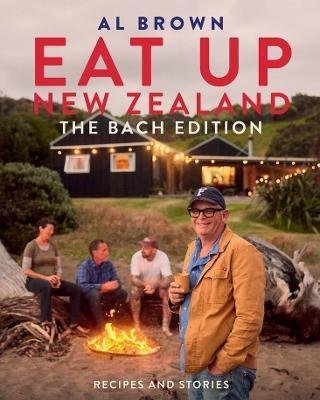
2 cups (500g) labneh or thick natural yoghurt
⅓ cup (115g) runny honey
handful mint leaves
dukkah
2 lemons, cut into wedges
Optional
seeds of 1 pomegranate
Method
Place the lamb chops in a large bowl with all the ingredients. With clean hands, massage the spices into the chops. Leave to marinate in the fridge for at least 2 days. The longer you marinate them, the better the result.
Heat your chargrill, barbecue or oven grill to high.
Cook the shoulder chops all the way through, letting them get a decent amount of char and caramelisation on them. Remove and let rest for five minutes.
To serve
Spread the labneh or yoghurt on a platter or plates. Top with the charred chops, then finish by drizzling over the runny honey, picked mint leaves, pomegranate seeds and dukkah. Serve with lemon quarters on the side for squeezing.
Eat now.
THE BOOK
Eat Up New Zealand: The Bach Edition, by Al Brown, published by Allen & Unwin NZ, RRP $49.99
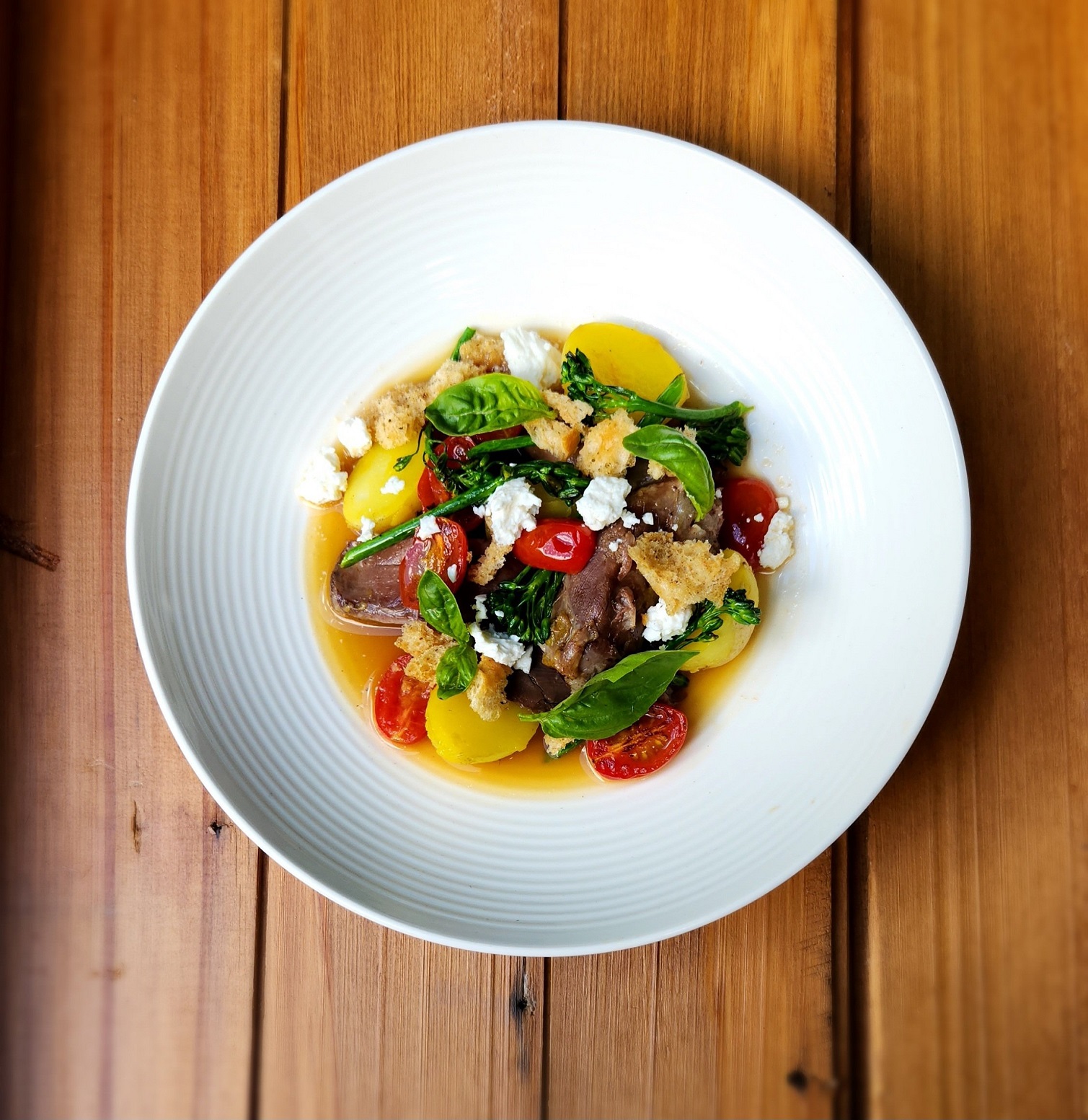 Provenance Mediterranean lamb shanks
Provenance Mediterranean lamb shanks

Pulled braised lamb fore shank is served with saffron buttered baby potatoes, capers, roast fennel, cherry tomatoes, broccolini, crumbled feta and pangritata.
Serves 4
Lamb shanks
Four-pack Provenance lamb fore shanks
400ml light chicken stock
50ml sweet sherry
lemon, zest and juice
fresh bay leaf, rosemary sprigs and lemon thyme
1 cup sliced onion
2 cloves garlic
salt, cracked pepper to season
pinch of ground fennel seeds
50ml olive oil
Saffron potatoes
400g baby gourmet potatoes
50g salted butter
pinch saffron
pinch of chilli flake
1 tsp lemon juice
Vegetable garnish
8 heads of broccolini, cut in half lengthwise
1 fennel bulb, slices into thin wedges
16 cherry tomatoes
olive oil
salt to season
Method
Season the lamb shanks with salt and pepper and fennel seeds.
Heat olive oil in a braising pan and lightly colour the shanks all over.
Remove the shanks and add the onion and garlic and lightly colour.
Add the chicken stock, sherry and lemon and place the lamb shanks back in along with the herbs.
Cover with a tight-fitting lid and place in a preheated 130°C oven and slow cook for 3-4 hours or until the meat falls from the bone when shaken.
Remove the shanks from the pot, pull the meat away from the bones and set aside, discarding the bone, skin and soft fat.
Strain the cooking broth and return to the boil to bring fat to the surface and remove with a ladle or decant the fat away and discard.
Set the lamb shank meat and broth aside in a warm place until required for plating.
Saffron potatoes
Cut baby gourmet potatoes in half lengthwise and place in a pot of boiling salted water.
Simmer for approximately 12-15 minutes until tender but still slightly firm to the bite.
In a small saucepan, warm the butter with lemon juice, chilli flakes and saffron. Keep warm and allow the flavours and colours to infuse by swirling occasionally over 15-20min.
Drain the hot water from the potatoes when cooked and pour over the butter mixture and toss well until the potatoes are well coated. Set aside until required.
Vegetable garnish
Toss the fennel and broccolini in a bowl with some olive oil and season with salt.
Toss the cherry tomatoes in olive oil.
Place the fennel and broccolini on a baking sheet and put in a 220°C oven for 10 minutes until the edges are singed. Add the cherry tomatoes and bake for a further 5 minutes.
Remove from the oven and keep warm until required.
To plate
Place the lamb shank meat, fennel, broccolini and cherry tomatoes on a tray and reheat under a grill for a few minutes.
Place the buttered saffron potatoes in serving bowls and arrange the lamb, fennel and broccolini around the bowl.
Pour over some of the hot broth.
Scatter with the toasted pangritata, crumbled feta, salted capers and cherry tomatoes and serve.

